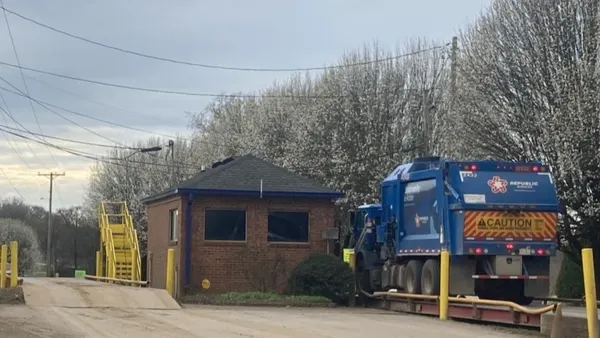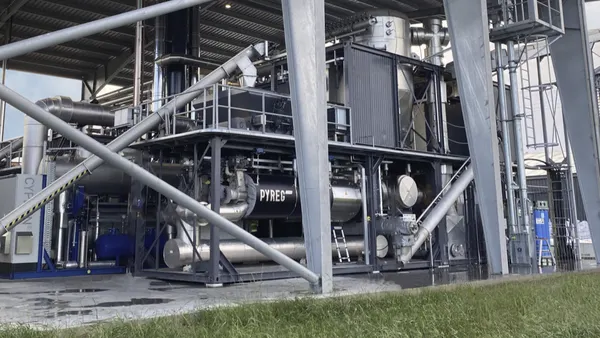Dive Brief:
- Hanford, WA city officials plan to pile waste layered with soil at its landfill rather than dig another 70-foot-deep cell (known as a "supercell") to bury its fast accumulating waste. The existing cells, which once had 18 million tons of capacity, have about a half-ton of capacity left.
- Adding waste 20 feet above grade would save $30 million for a current cleanup project involving hauling low-level radioactive or hazardous chemical waste to the lined landfill. The plan to build up, rather than dig down, carries almost no cost, and the system can handle as much waste as one double cell, said Dave Einan, an EPA engineer. At closure, the landfill will be 70 feet above grade at its peak.
- EPA studies confirm the site’s current liner and leachate collection system can handle the additional waste, and the agency has approved the plan to build up. The Department of Energy (DOE) is still expected to have another supercell ready in about three years since it will be needed even if an alternative to making more cells is pursued.
Dive Insight:
The clock has been ticking as Hanford moves on its money- and space-saving plan — with the Hanford cleanup adding more pressure, accelerating the accumulation of waste and adding expense burdens. Simultaneously, the state has focused on remediating serious worker safety issues at the Hanford Nuclear Reservation cleanup.
"We are just about to the point of filling those cells [and needing more capacity] to continue the cleanup work," said Stacy Charboneau, DOE manager of the Richland Operations Office to the Tri-City Herald.
A large portion of the mound will have a 2% grade with a 12% grade for the side slopes.
"Because of the scale of the Environmental Restoration Disposal Facility, you are not going to notice a huge difference," said Mark French, DOE project director to the Tri-City Herald.








